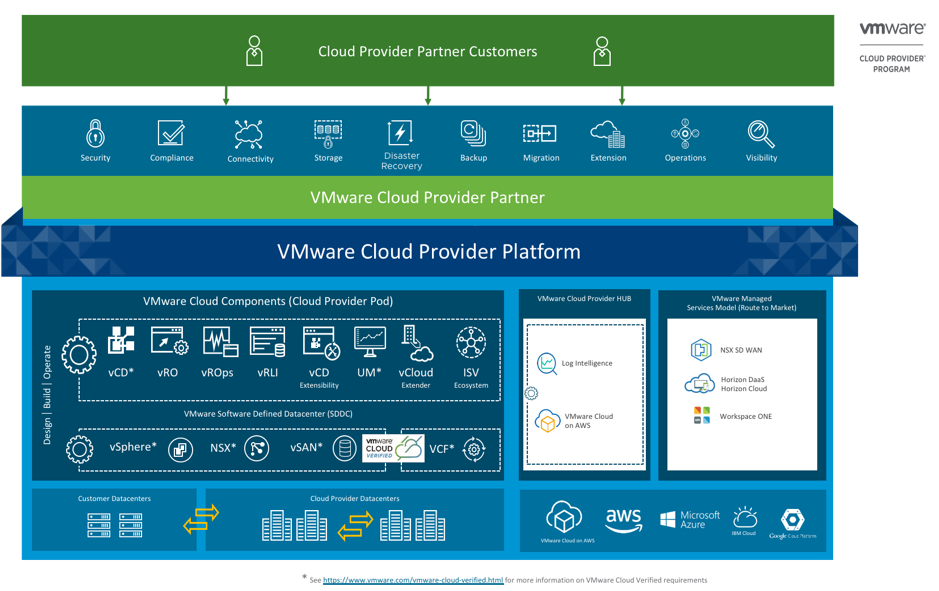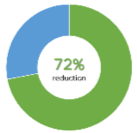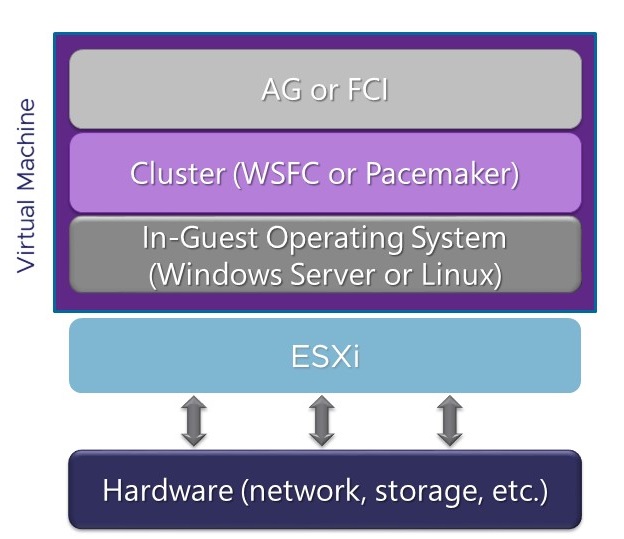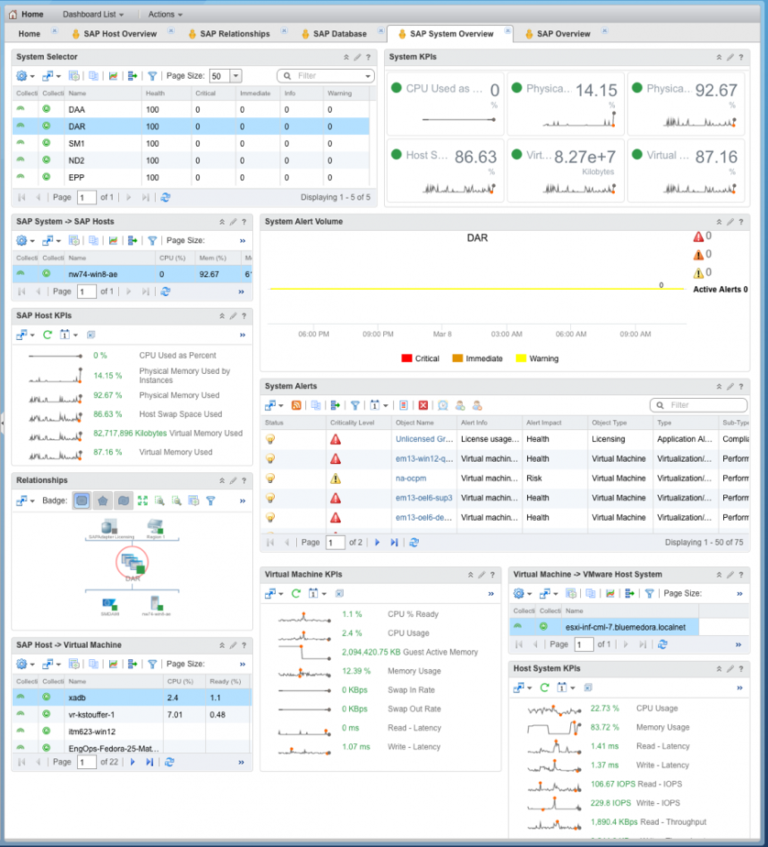
Contents
- 1
- 1.1
- 1.2 Say hello to an integrated UI with vCloud Director!
- 1.3
- 1.4 Usability improvements & Policy controls ensure stability and enable tiered services
- 1.5
- 1.6 Scale improvements to meet higher volume demand
- 1.7
- 1.8 Orchestration plugin to create your own workflows and runbooks
- 1.9
- 1.10 Helping Cloud Providers with ‘day 2’ operations
VMware is announcing vCloud Availability Cloud-to-Cloud Disaster Recovery (DR) 1.5. As a core component of the VMware Cloud Provider Platform, vCloud Availability ensures application continuity between vCloud Director Virtual Data Centres. It fills a much-needed gap in providing native Disaster Recovery of workloads between vCloud Director instances.
VMware vCloud Availability Cloud-to-Cloud DR is a core part of the VMware Cloud Provider Platform which continues to innovate solutions applicable for enterprise and Cloud Providers.
- Enterprises seeking managed services or self-service solutions on VMware can utilize the Cloud Provider Platform’s solutions to run cloud services, whether on-premises, in a Cloud Provider datacenter or across multiple clouds. The platform caters for 100% compatibility and investment protection as customers move their VMware workloads and applications to cloud.
- Cloud Providers play an important role in assisting enterprises migrate to cloud and running and operating their managed services. Cloud Providers can utilise the Cloud Provider Platform solutions to migrate customers quickly, safely and efficiently to scalable, repeatable and validated cloud solutions across multiple clouds to meet the customers’ needs whilst owning the end to end service for the customer.

The vCloud Availability Cloud-to-Cloud solution is designed expressly for VMware Cloud Providers to run on top of vCloud Director and offer Cloud-to-Cloud Disaster Recovery Services between different org vDCs on the same vCloud Director or to a different vCloud Director instance. It enables further monetization of existing VMware vCloud Director multi-tenant cloud environments with replication and failover capabilities for vCloud Director workloads at both VM and vApp level.

Version 1.5 is a direct upgrade of 1.0 and builds on the success of 1.0 with several new key areas:


Say hello to an integrated UI with vCloud Director!
VMware Cloud Provider Partners’ can now offer Disaster Recovery services within their vCloud Director 9.1 UI for Tenant and Provider workflows.
- For Cloud Providers on earlier versions, there is a different UI (exactly the same functionality) that is accessible everywhere and like the vCloud Director UI, it maintains symmetry for source or destination execution of Disaster Recovery workflows and inventory access.
- For tenants, no more screen hopping – by enabling ‘Disaster Recovery’ in the toolbar for their org (disabled by default), they can see it in their vCloud Director UI. Cloud Providers can use this as a nice upsell to their customers.
Both UI’s utilise a public API, new in 1.5, aligned to Swagger definition to help automate API related processes. The API provides the ability to authenticate and manage sessions to the Replication manager; vApp replication workflows (create replication, delete replication, query, failover, failback, test, pause, resume sync etc), system health monitoring, initial configuration (register tunnel service, configure, DNS, endpoint config, query etc) and sites management. This API enables Cloud Providers to embed vCloud Availability Cloud-to-Cloud DR functionality in existing portals if necessary or utilise the API functions to optimize operational functions.

Usability improvements & Policy controls ensure stability and enable tiered services
Much of the feedback we received from 1.0 was around enforcement of controls and usability improvements for larger environments. As a result, we implemented policy controls for Cloud Providers to specify a min RPO at a tenant Org level, allowing them to tier their offerings to their tenant Orgs. In addition with vSphere 6.5, we also naturally support the lowest RPO of 5 min! Furthermore, Cloud Providers can also limit impacts on storage over-utilization with the ability to set the maximum number of snapshots per Org and maximum number of replications per tenant.
A single native solution brings many benefits, like using the same authentication within vCloud Director to have integrated user sign-on for tenant admins or org users.
Within large environments, where there are many VMs and vApps, users can now filter in the UI for replication actions on multiple, single & groups (vApps), speeding up execution of workflows. Properties for assets can also now be edited on single, multiple vApp, VMs, and create snapshots, select recovery actions, all assisting configuration speed.

Scale improvements to meet higher volume demand
Cloud Providers must have the ability to scale, most importantly in multi-tenant cloud environments supported by Cloud Director. With increased testing and validation, we found: 300 active protections using a single large vCloud Availability Replicator, 100 (up from 30 in 1.0) tenants with active replications, 7 active vCloud Availability Replicator instances per vCloud Availability Cloud-to-Cloud instance and up to 2 TB size of protected VMDK. In terms of concurrency, we’re up to 120 concurrent operations. For this purpose, we successfully tested 3000 active protections across more than 100 tenants! (Note: these are not set limits, only what we have tested)

Orchestration plugin to create your own workflows and runbooks
Orchestration is a critical component of any DR solution, for example the ability to order power-up of workloads and applications can make a critical impact on recovery time. vCloud Availability Cloud-to-Cloud 1.5 will be able to execute a separate plugin (available post GA) to provide exposed orchestration in vRealize Orchestrator that will assist with inventory tasks and collect data from vCloud Availability vApp Replication Service/Manager instances.
With the newly exposed UI extensibility capabilities in vCloud Director, workflows could run from vRealize Orchestrator Client or import into vCD, as tiles for operations teams or tenants to execute – a great managed service opportunity.

Helping Cloud Providers with ‘day 2’ operations
Naturally, Cloud Providers must ensure service quality and maintain service levels by monitoring and setting alerts as various problems occur. vCloud Availability Cloud-to-Cloud 1.5 supports the vRealize Operations 6.6.1 and above plugin (available post GA) for monitoring all components and activities, inventory, health status, threshold alarms and detailed capacity, replication status and violation reports. Cloud Providers can now deliver additional managed service reporting or ensure they are maintaining SLA and quality KPI for the service itself.
In summary, a lot is in vCloud Availability Cloud-to-Cloud DR 1.5 and we expect this to be a highly adopted solution for our VMware Cloud Provider partners.
What to know more?
Please visit https://www.vmware.com/products/vcloud-availability.html or https://cloudsolutions.vmware.com/ for more solution ideas
Author – Guy Bartram, Director, Product Marketing, CPSBU






